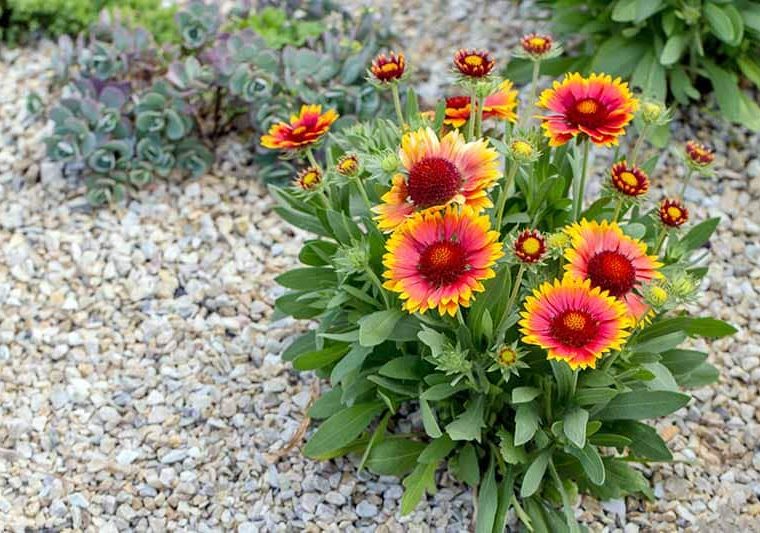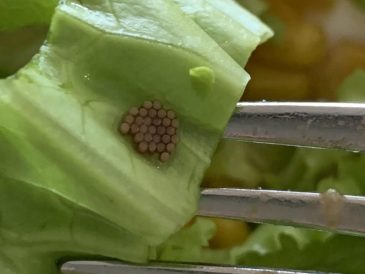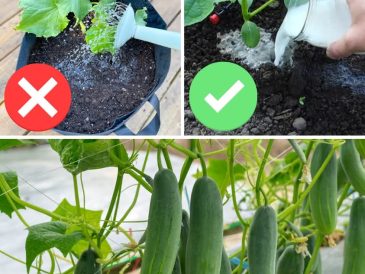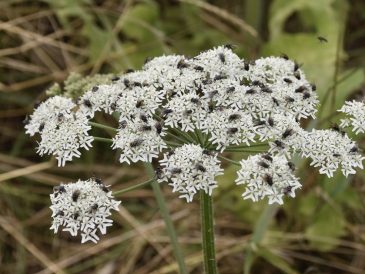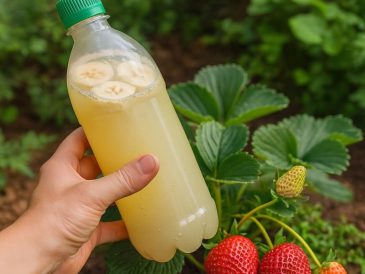Nothing makes a garden more lively and welcoming than a bed of flowers that bloom from early summer through late fall.
If you want to create a vibrant, colorful landscape that lasts all season long, planting summer-blooming flowers is essential.
The best part? Many of these plants are low-maintenance and thrive in a range of climates, making them perfect for both beginner and seasoned gardeners.
In this guide, we’ll explore 15 outstanding plants that bloom all summer long. You’ll learn about their ideal growing conditions, how to care for them, and the benefits they bring to your garden.
1. Coneflower (Echinacea)
- USDA Zones: 3–9
- Sun Requirements: Full sun
- Soil Type: Well-drained, sandy or loamy soil with average fertility
Coneflowers are native to North America and are prized for their drought tolerance, resilience, and long bloom time.
These perennials produce vibrant daisy-like flowers with prominent cone-shaped centers. Their blooms appear in mid-summer and continue into early fall.
Coneflowers are not only visually stunning but also provide essential nectar for pollinators like bees and butterflies. They’re also deer-resistant and make excellent cut flowers.
Care Tips:
- Water regularly until established
- Remove spent blooms to encourage more flowers
- Divide clumps every 3–4 years to maintain vigor
2. Black-Eyed Susan (Rudbeckia hirta)
- USDA Zones: 3–9
- Sun Requirements: Full sun
- Soil Type: Average, well-drained soil; tolerates clay
These cheerful golden-yellow blooms with dark centers bring sunny color to gardens and bloom from midsummer through early fall.
Black-eyed Susans are hardy, low-maintenance, and self-seed easily, meaning they often return the next year even if grown as annuals. They attract butterflies and beneficial insects while resisting drought and disease.
Care Tips:
- Deadhead for prolonged blooming
- Water during extended dry spells
- Divide established clumps every few years
3. Zinnia
- USDA Zones: Annual in all zones
- Sun Requirements: Full sun
- Soil Type: Fertile, well-drained; prefers slightly acidic to neutral pH
Zinnias are fast-growing annuals known for their bright, long-lasting flowers in nearly every color imaginable.
They come in a variety of shapes – doubles, singles, cactus-flowered – and attract butterflies.
Zinnias are perfect for cutting gardens and bloom from late spring until frost with regular deadheading.
Care Tips:
- Avoid overhead watering to prevent mildew
- Thin seedlings to ensure good air circulation
- Pinch early growth to encourage bushiness

15 Plants That Bloom All Summer Long
by Linda Parker
March 7, 2020 – Updated on June 25, 2025
in PLANTS
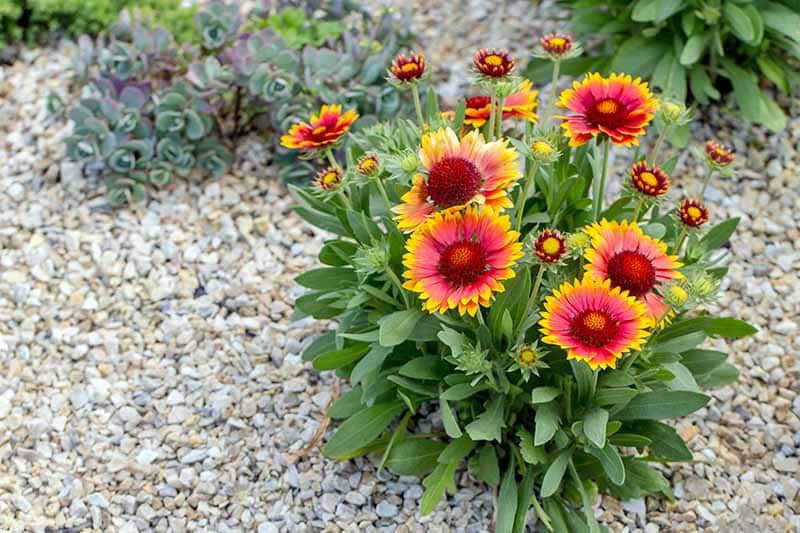
Nothing makes a garden more lively and welcoming than a bed of flowers that bloom from early summer through late fall.
If you want to create a vibrant, colorful landscape that lasts all season long, planting summer-blooming flowers is essential.
The best part? Many of these plants are low-maintenance and thrive in a range of climates, making them perfect for both beginner and seasoned gardeners.
In this guide, we’ll explore 15 outstanding plants that bloom all summer long. You’ll learn about their ideal growing conditions, how to care for them, and the benefits they bring to your garden.
1. Coneflower (Echinacea)
- USDA Zones: 3–9
- Sun Requirements: Full sun
- Soil Type: Well-drained, sandy or loamy soil with average fertility
Coneflowers are native to North America and are prized for their drought tolerance, resilience, and long bloom time.
These perennials produce vibrant daisy-like flowers with prominent cone-shaped centers. Their blooms appear in mid-summer and continue into early fall.
Coneflowers are not only visually stunning but also provide essential nectar for pollinators like bees and butterflies. They’re also deer-resistant and make excellent cut flowers.
Care Tips:
- Water regularly until established
- Remove spent blooms to encourage more flowers
- Divide clumps every 3–4 years to maintain vigor
2. Black-Eyed Susan (Rudbeckia hirta)
- USDA Zones: 3–9
- Sun Requirements: Full sun
- Soil Type: Average, well-drained soil; tolerates clay
These cheerful golden-yellow blooms with dark centers bring sunny color to gardens and bloom from midsummer through early fall.
Black-eyed Susans are hardy, low-maintenance, and self-seed easily, meaning they often return the next year even if grown as annuals. They attract butterflies and beneficial insects while resisting drought and disease.
Care Tips:
- Deadhead for prolonged blooming
- Water during extended dry spells
- Divide established clumps every few years
3. Zinnia
- USDA Zones: Annual in all zones
- Sun Requirements: Full sun
- Soil Type: Fertile, well-drained; prefers slightly acidic to neutral pH
Zinnias are fast-growing annuals known for their bright, long-lasting flowers in nearly every color imaginable.
They come in a variety of shapes – doubles, singles, cactus-flowered – and attract butterflies.
Zinnias are perfect for cutting gardens and bloom from late spring until frost with regular deadheading.
Care Tips:
- Avoid overhead watering to prevent mildew
- Thin seedlings to ensure good air circulation
- Pinch early growth to encourage bushiness
4. Geranium (Pelargonium)
- USDA Zones: 10–11; annual in cooler zones
- Sun Requirements: Full sun to partial shade
- Soil Type: Loose, well-drained, slightly acidic to neutral soil
Garden geraniums are versatile plants that flourish in containers and beds. Their vibrant flower clusters range in color from red and pink to purple and white.
They’re also known for their aromatic foliage, which deters pests. Regular feeding and deadheading ensure season-long bloom.
Care Tips:
- Fertilize monthly with balanced fertilizer
- Water when the top inch of soil is dry
- Remove yellowing leaves and spent flowers
5. Daylily (Hemerocallis)
- USDA Zones: 4–9
- Sun Requirements: Full sun to partial shade
- Soil Type: Moist, well-drained; tolerates poor soil
Each individual daylily flower blooms for just one day, but each plant produces dozens of buds over weeks.
With hybrid varieties, you can find reblooming types that extend the season. Their sword-like foliage and varied flower colors make them a favorite for landscaping.
Care Tips:
- Remove faded flowers to improve appearance
- Divide crowded clumps every 3–5 years
- Mulch in summer to retain soil moisture
6. Blanket Flower (Gaillardia)
- USDA Zones: 3–10
- Sun Requirements: Full sun
- Soil Type: Well-drained, sandy or rocky; avoid overly rich soil
With red and yellow daisy-like flowers, blanket flowers add a fiery burst of color all summer.
These heat- and drought-tolerant perennials thrive in lean soil and attract bees and butterflies. Once established, they require very little attention.
Care Tips:
- Deadhead regularly for more blooms
- Avoid fertilizing to maintain compact growth
- Cut back in midsummer to promote a second flush
7. Petunia
- USDA Zones: Annual in most zones
- Sun Requirements: Full sun
- Soil Type: Rich, well-drained
Petunias are beloved for their trumpet-shaped flowers and prolific blooming habit.
Whether used in beds, hanging baskets, or window boxes, they bring bold, continuous color. Wave and Supertunia varieties offer especially long flowering periods.
Care Tips:
- Feed every two weeks with high-potassium fertilizer
- Deadhead or shear back midseason to rejuvenate
- Water consistently during hot weather
8. Marigold (Tagetes)
- USDA Zones: Annual in most zones
- Sun Requirements: Full sun
- Soil Type: Any well-drained soil; thrives in poor soils
Marigolds produce mounds of vivid yellow, orange, or red blooms and are known for their pest-repelling properties.
French marigolds are compact, while African marigolds are tall and bold. They are excellent companions for vegetable gardens.
Care Tips:
- Water at soil level to avoid fungal diseases
- Remove dead blooms to keep flowers coming
- Start from seed or transplants for quick results
9. Salvia
- USDA Zones: 4–9 perennial types; annual elsewhere
- Sun Requirements: Full sun
- Soil Type: Well-drained; tolerates dry conditions
Salvias bring vertical drama and are especially attractive to hummingbirds. Their dense spikes of purple, red, or blue flowers hold up well in heat and poor soil. Some types, like Salvia guaranitica, bloom into fall.
Care Tips:
- Cut back after first bloom to encourage repeat flowering
- Avoid overwatering
- Divide clumps every few years
10. Coreopsis (Tickseed)
- USDA Zones: 4–9
- Sun Requirements: Full sun
- Soil Type: Sandy or loamy, well-drained
Coreopsis are cheerful, daisy-like flowers that bloom reliably from early summer to fall. Available in yellow, orange, red, and bicolor varieties, these plants are highly drought-tolerant and excellent for pollinators.
Care Tips:
- Deadhead or shear back after first bloom
- Divide every 2–3 years to maintain vigor
- Water deeply but infrequently
11. Verbena
- USDA Zones: Annual in most zones, perennial in 8–10
- Sun Requirements: Full sun
- Soil Type: Well-drained, fertile
Verbena offers clusters of small blooms that form a carpet of color. Perfect for containers, baskets, and borders, it can trail or mound depending on the variety. It tolerates heat and light drought once established.
Care Tips:
- Trim regularly to keep tidy and blooming
- Provide consistent moisture for best results
- Fertilize every few weeks

15 Plants That Bloom All Summer Long
by Linda Parker
March 7, 2020 – Updated on June 25, 2025
in PLANTS

Nothing makes a garden more lively and welcoming than a bed of flowers that bloom from early summer through late fall.
If you want to create a vibrant, colorful landscape that lasts all season long, planting summer-blooming flowers is essential.
The best part? Many of these plants are low-maintenance and thrive in a range of climates, making them perfect for both beginner and seasoned gardeners.
In this guide, we’ll explore 15 outstanding plants that bloom all summer long. You’ll learn about their ideal growing conditions, how to care for them, and the benefits they bring to your garden.
1. Coneflower (Echinacea)
- USDA Zones: 3–9
- Sun Requirements: Full sun
- Soil Type: Well-drained, sandy or loamy soil with average fertility
Coneflowers are native to North America and are prized for their drought tolerance, resilience, and long bloom time.
These perennials produce vibrant daisy-like flowers with prominent cone-shaped centers. Their blooms appear in mid-summer and continue into early fall.
Coneflowers are not only visually stunning but also provide essential nectar for pollinators like bees and butterflies. They’re also deer-resistant and make excellent cut flowers.
Care Tips:
- Water regularly until established
- Remove spent blooms to encourage more flowers
- Divide clumps every 3–4 years to maintain vigor
2. Black-Eyed Susan (Rudbeckia hirta)
- USDA Zones: 3–9
- Sun Requirements: Full sun
- Soil Type: Average, well-drained soil; tolerates clay
These cheerful golden-yellow blooms with dark centers bring sunny color to gardens and bloom from midsummer through early fall.
Black-eyed Susans are hardy, low-maintenance, and self-seed easily, meaning they often return the next year even if grown as annuals. They attract butterflies and beneficial insects while resisting drought and disease.
Care Tips:
- Deadhead for prolonged blooming
- Water during extended dry spells
- Divide established clumps every few years
3. Zinnia
- USDA Zones: Annual in all zones
- Sun Requirements: Full sun
- Soil Type: Fertile, well-drained; prefers slightly acidic to neutral pH
Zinnias are fast-growing annuals known for their bright, long-lasting flowers in nearly every color imaginable.
They come in a variety of shapes – doubles, singles, cactus-flowered – and attract butterflies.
Zinnias are perfect for cutting gardens and bloom from late spring until frost with regular deadheading.
Care Tips:
- Avoid overhead watering to prevent mildew
- Thin seedlings to ensure good air circulation
- Pinch early growth to encourage bushiness
4. Geranium (Pelargonium)
- USDA Zones: 10–11; annual in cooler zones
- Sun Requirements: Full sun to partial shade
- Soil Type: Loose, well-drained, slightly acidic to neutral soil
Garden geraniums are versatile plants that flourish in containers and beds. Their vibrant flower clusters range in color from red and pink to purple and white.
They’re also known for their aromatic foliage, which deters pests. Regular feeding and deadheading ensure season-long bloom.
Care Tips:
- Fertilize monthly with balanced fertilizer
- Water when the top inch of soil is dry
- Remove yellowing leaves and spent flowers
5. Daylily (Hemerocallis)
- USDA Zones: 4–9
- Sun Requirements: Full sun to partial shade
- Soil Type: Moist, well-drained; tolerates poor soil
Each individual daylily flower blooms for just one day, but each plant produces dozens of buds over weeks.
With hybrid varieties, you can find reblooming types that extend the season. Their sword-like foliage and varied flower colors make them a favorite for landscaping.
Care Tips:
- Remove faded flowers to improve appearance
- Divide crowded clumps every 3–5 years
- Mulch in summer to retain soil moisture
6. Blanket Flower (Gaillardia)
- USDA Zones: 3–10
- Sun Requirements: Full sun
- Soil Type: Well-drained, sandy or rocky; avoid overly rich soil
With red and yellow daisy-like flowers, blanket flowers add a fiery burst of color all summer.
These heat- and drought-tolerant perennials thrive in lean soil and attract bees and butterflies. Once established, they require very little attention.
Care Tips:
- Deadhead regularly for more blooms
- Avoid fertilizing to maintain compact growth
- Cut back in midsummer to promote a second flush
7. Petunia
- USDA Zones: Annual in most zones
- Sun Requirements: Full sun
- Soil Type: Rich, well-drained
Petunias are beloved for their trumpet-shaped flowers and prolific blooming habit.
Whether used in beds, hanging baskets, or window boxes, they bring bold, continuous color. Wave and Supertunia varieties offer especially long flowering periods.
Care Tips:
- Feed every two weeks with high-potassium fertilizer
- Deadhead or shear back midseason to rejuvenate
- Water consistently during hot weather
8. Marigold (Tagetes)
- USDA Zones: Annual in most zones
- Sun Requirements: Full sun
- Soil Type: Any well-drained soil; thrives in poor soils
Marigolds produce mounds of vivid yellow, orange, or red blooms and are known for their pest-repelling properties.
French marigolds are compact, while African marigolds are tall and bold. They are excellent companions for vegetable gardens.
Care Tips:
- Water at soil level to avoid fungal diseases
- Remove dead blooms to keep flowers coming
- Start from seed or transplants for quick results
9. Salvia
- USDA Zones: 4–9 perennial types; annual elsewhere
- Sun Requirements: Full sun
- Soil Type: Well-drained; tolerates dry conditions
Salvias bring vertical drama and are especially attractive to hummingbirds. Their dense spikes of purple, red, or blue flowers hold up well in heat and poor soil. Some types, like Salvia guaranitica, bloom into fall.
Care Tips:
- Cut back after first bloom to encourage repeat flowering
- Avoid overwatering
- Divide clumps every few years
10. Coreopsis (Tickseed)
- USDA Zones: 4–9
- Sun Requirements: Full sun
- Soil Type: Sandy or loamy, well-drained
Coreopsis are cheerful, daisy-like flowers that bloom reliably from early summer to fall. Available in yellow, orange, red, and bicolor varieties, these plants are highly drought-tolerant and excellent for pollinators.
Care Tips:
- Deadhead or shear back after first bloom
- Divide every 2–3 years to maintain vigor
- Water deeply but infrequently
11. Verbena
- USDA Zones: Annual in most zones, perennial in 8–10
- Sun Requirements: Full sun
- Soil Type: Well-drained, fertile
Verbena offers clusters of small blooms that form a carpet of color. Perfect for containers, baskets, and borders, it can trail or mound depending on the variety. It tolerates heat and light drought once established.
Care Tips:
- Trim regularly to keep tidy and blooming
- Provide consistent moisture for best results
- Fertilize every few weeks
12. Bee Balm (Monarda)
- USDA Zones: 3–9
- Sun Requirements: Full sun to partial shade
- Soil Type: Moist, rich, well-drained
Bee balm’s shaggy, tubular flowers come in red, pink, purple, and white. A favorite of bees and hummingbirds, it brings color and life to any pollinator garden. Its aromatic foliage can also be used in teas.
Care Tips:
- Divide every 2–3 years to prevent mildew
- Water regularly but don’t over-saturate
- Provide air circulation to reduce disease
13. Impatiens
- USDA Zones: Annual in most zones
- Sun Requirements: Partial to full shade
- Soil Type: Rich, moist, well-drained
Impatiens are go-to plants for shady spots. With minimal care, they produce nonstop blooms in a rainbow of colors. New Guinea and SunPatiens varieties tolerate more sun.
Care Tips:
- Water consistently, especially in containers
- Pinch back occasionally for bushiness
- Feed with a balanced fertilizer
14. Lantana
- USDA Zones: 9–11, annual elsewhere
- Sun Requirements: Full sun
- Soil Type: Dry to average, well-drained
Lantana offers bold, multicolored flower clusters and thrives in heat and drought. It blooms continuously from late spring through fall and attracts butterflies in droves.
Care Tips:
- Water sparingly once established
- Prune to control growth and shape
- Tolerates salt and poor soils well
15. Calibrachoa (Million Bells)
- USDA Zones: Annual in most zones
- Sun Requirements: Full sun to partial shade
- Soil Type: Slightly acidic, well-drained
Resembling miniature petunias, calibrachoa trail over containers with a cascade of vibrant flowers. They come in dozens of colors and bloom non-stop with proper care.
Care Tips:
- Use a fertilizer with iron to prevent chlorosis
- Keep evenly moist but not soggy
- Deadhead occasionally to maintain vigor
Final Tips for Continuous Summer Blooms:
- Deadhead regularly to encourage new blooms
- Apply mulch to retain moisture and reduce weeds
- Water deeply and less frequently to promote strong roots
- Fertilize biweekly with a balanced or bloom-boosting fertilizer
- Monitor for pests and diseases and treat early
By selecting a variety of these long-blooming plants, you can design a garden that remains bursting with color from early summer through the first frost.

